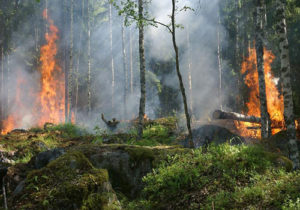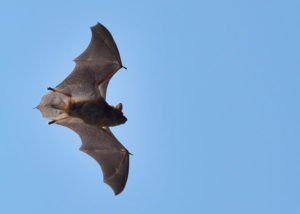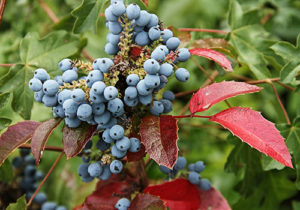Words from the Garden: Our Favorite Horticultural Lingo
As you may already know, there is a lot to learn when it comes to gardening: plants, bugs, microclimates, soil conditions, animals, tools, minerals, moisture levels, and so much more! Once one part of the puzzle becomes clear, you may realize you've opened up an entirely new can of worms to be explored. When it comes to the fanciful or whacky words below, you don't have to necessarily learn any of them to be a good gardener. We just thought we'd collect some of our favorites from the vast worlds of botany and horticulture. Take what interests you and leave the rest, then get back out into the garden. And who knows, you just may need a word like "Chiropterophilous" in conversation one day!
POLLINATION
There are so many ways plants take advantage of what’s around them to aid the process of reproduction, here are a few.
Anemophily: (noun) Pollination performed by wind. About 12% of the world's flowering plants are pollinated this way, including many of the important staple crops like rice, wheat, corn and other grains.
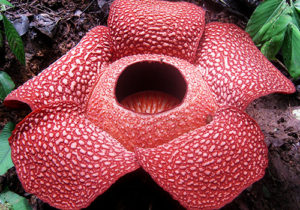
Elephophily: (noun) A form of pollination whereby pollen or spores are distributed by the feet of elephants, as in the infamously malodorous Rafflesia arnoldii. It seems fitting that the largest individual flower on earth and the largest land animal on earth share a connection.
![]()
Pyrophyte: (noun) A plant that has adapted to fire as part of their life cycle. Moderate fires actually help plants like Lodgepole (Pinus contorta) and other pines with seed dispersal. The increased heat causes pinecones to burst more easily and reduces underbrush to allow better access to soil nutrients. Eucalyptus' secrete fire-resistant oils, counting on regular fires to keep other trees from encroaching on their habitats.
![]()
Chiropterophilous: (adj.) Pollinated by bats. More than 500 species of tropical plants are pollinated by bats. The nocturnal blooms they tend to favor are often dull colored and have strong scents, like that of rotting fruit.
Sonication: (noun) "Buzz pollination." Certain bees can grab onto a flower and move their flight muscles rapidly, which causes the flower and anthers to vibrate and dislodge pollen. Plants that use this method include most species of the genus Solanum, (Those are your tasty garden tomatoes, potatoes, and eggplants).
APPEARANCE
There are about a million different ways to describe how plants look, here are a few choice descriptors we think may excellent conversation.
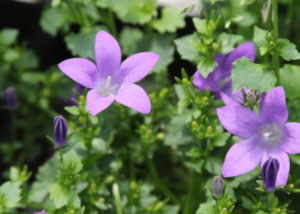
Campanulate: (adj.) Bell-shaped; in latin it literally means "little bell." The aptly named Bellflower (Campanula persicifolia) is a perfect example of a campanulate bloom. If you see this word in the scientific name of a plant you’ll have a pretty good idea of what it’s flowers will look like.![]()
Obcordate: (adj.) "Of a leaf blade." Broad and notched at the tip; heart-shaped but attached at the pointed end. White Clover (Trifolium repens) and Wood Sorrel (Oxalis) are the most common examples, each stem having 3 (or 4 if you’re lucky!) obcordate leaves.
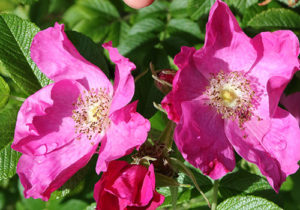
Rugose: (adj.) Describes a wrinkled condition; either covered with wrinkles, or crumpled like a wrinkled leaf. Rugosa roses (or beach roses) take their name from this trait as their petals are thin and textured, as opposed to traditional roses (Rosaceae) that typically have very smooth thick petals in comparison.
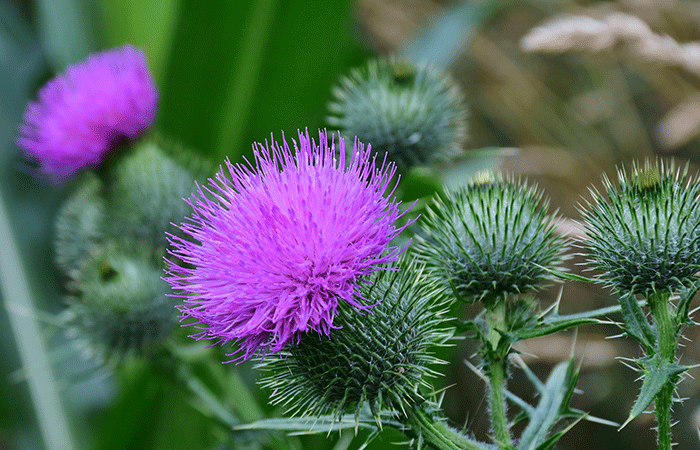
![]() Aculeate: (adj.) Armed with prickles. For example, rose stems and other thorny plants. It can also refer to the
Aculeate: (adj.) Armed with prickles. For example, rose stems and other thorny plants. It can also refer to the
sting of a wasp or bee. Either way, a careless encounter with an "aculeate" can be a painful experience!
![]()
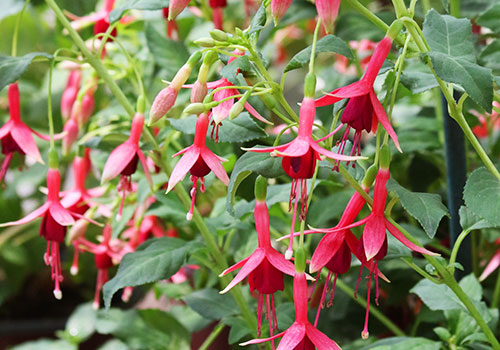
Cernuous: (adj.) Nodding, falling headlong or face down; inclined, stooping, or bowing forward. This is applied to many species with a nodding or stooping habit, such as many Narcissus (daffodil) and Dierama species. Many plant species bear the specific epithet "cernua" in their scientific name to denote this trait.![]()
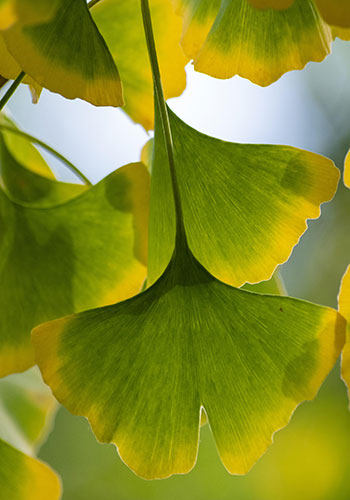
![]()
Flabellate: (adj.) Fan-shaped. Ginkgo biloba leaves are a perfect example of this descriptor. And apprently, it works for them! These trees have been around for so long, over 270 million years, that they’re considered ‘living fossils!’
BEHAVIOR
![]() Plants are living organisms with their own forms of behavior, often very different from those of humans and other living things.
Plants are living organisms with their own forms of behavior, often very different from those of humans and other living things.
Epilithic: (adj.) Growing on stone. They say ‘a rolling stone gathers no moss,’ but in the right conditions, you can count on a stationary stone to allow many plants like mosses and ferns to grow and thrive.
Halophyte: (noun) A plant adapted to living in highly saline habitats, or a plant that accumulates high concentrations of salt in its tissues. Many plants native to the Pacific Northwest fall in this category including Pacific Madrone (Arbutus mensiesii), and Oregon Grape (Mahonia aquifolium).
Scandent: (adj.) Climbing, by whatever means. Anyone who has worked to remove an infestation of English Ivy (or even Boston Ivy, Wisteria, or Grapevine) will know to what great lengths some plants will go to in their drive to climb upwards, often using other plants and man-made structures to get there.
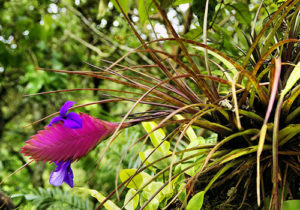
Epiphyte: (noun) A plant that grows on another plant, like parasitic plants, but rather than damaging the host plant, it prefers to get its nutrients from the air and rainfall. Orchids, ferns, and many bromeliads fall into this category, though the most common example would be Tillandsias.
![]()
Ericaceous: (adj.) Used to describe plants that like acid soil (like we have in the Pacific Northwest) and will not tolerate alkaline soils (containing lots of lime or chalk). Blueberries are a popular example of ericaceous plants, and so are lingonberries, Rhododendrons, Azaleas, and Camellias.
Photoperiodism: (noun) Refers to a reaction some organisms have to the length of day or night. In plants, this reaction is usually expressed with flowers. Many plants use this trait to gain a better advantage when it comes to reproduction, either by blooming at night or in the winter when there is less competition for pollination.
STRUCTURE
![]() Roots, leaves and stems are some of the most basic parts of a plant, but in all their wondrous variety, plants don’t limit themselves to just those simple structures. Here are a few more to look for in the world around you.
Roots, leaves and stems are some of the most basic parts of a plant, but in all their wondrous variety, plants don’t limit themselves to just those simple structures. Here are a few more to look for in the world around you.
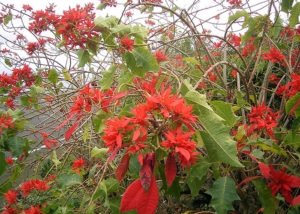
Bract: (noun) A modified leaf associated with a flower or "inflorescence" and differing in shape, size, or color from other leaves (and with no axillary bud). In simpler terms, sometimes what looks like a flower is actually just a fancy leaf! Excellent examples of this are bougainvillea and poinsettias.![]()
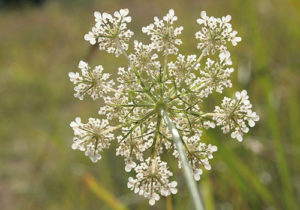
Umbel: (noun) Used to describe a mostly flat topped flower cluster in which individual flower stems radiate from a common point, like the ribs of an umbrella. Queen Anne’s Lace (Daucus carota) is an excellent example. Allium blooms are considered umbels as well, even though they form more of a ball shape than an umbrella.
Cladode: (noun) A photosynthetic branch or stem, often leaf-like and usually with little or no foliage leaves. In other words, instead of producing leaves, branches thicken or flatten-out and take on all the needed photosynthetic activities. For example Opuntia ‘Prickly Pear’ cactus is made up of multiple segments of cladodes. Asparagus is another plant where only small, unusable leaves remain, and no longer play a role in nutrient production.
Pappus: (noun) the tuft of hair on seeds from thistle, dandelion, and similar plants that helps the plant be carried on the wind.
CONDITIONS
If you need to diagnose a sickly looking plant, these words might not fix your plant, but they'll certainly help you describe what's going on!
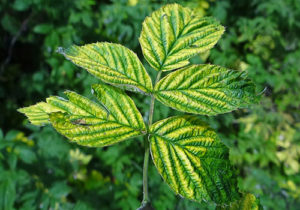
Chlorosis: (noun) A yellowing or blanching of the leaves due to lack of chlorophyll (green stuff that plants use to photosynthesize), nutrient deficiencies or disease. Typically, fertilizer will solve most causes of chlorosis, but other mineral additives might be necessary as well.
![]()
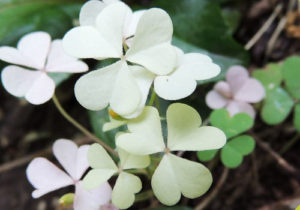
Etiolation: (noun) Lanky, weak, pale plant growth, resulting from low or no-light conditions. Have you ever moved something that had been sitting on your lawn for a while and seen what the grass looks like underneath? If yes, then you have experienced etiolation.
Turgor: (noun) Pressure exerted by fluid in a cell that presses the cell membrane against the cell wall. Turgor is what makes living plant tissue rigid. Loss of turgor, resulting from the loss of water in plant cells, is what causes flowers and leaves to wilt.
Riparian Zone: (noun) The interface between land and a river or stream. Plant habitats and communities along the river margins and banks are called riparian vegetation, characterized by water-loving plants. They help filter pollutants from upland areas, prevent bank erosion, and provide shade that lowers water temperatures and minimizes evaporation.
JUST A FEW MORE...
Being enormous plant nerds ourselves, we thought these few small editions were too cool not to include.
Cation Exchange Capacity (CEC): (noun) A measure of how much fertilizer soil can hold and release over time. High CEC, as in clay soils, means your soil can hold more fertilizers. Low CEC, as in sandy soils, means you will need to add fertilizer more often.
Petrichor: (noun) A distinctive, earthy, usually quite pleasant odor associated with rainfall, especially after a warm, dry period. It arises from a combination of plant oils and compounds formed by soil dwelling bacteria that are released into the air when they get wet.
Tilth: (noun) Describes the general health of the soil including a balance of nutrients, water, and air. Another important measure is the proportion of 'microbiota' or beneficial soil bacteria that keep the soil alive and make nutrients easily accessible to plants. Soil that is healthy, well-cared for, and has good physical qualities is considered in "good tilth."
Chelation: (noun) The formation of bonds between organic compounds and metals, some of which are insoluble, as in humus. Soluble chelates are used in fertilizers to help keep nutrient metals, such as iron, mobile in the soil and thus available to plants rather than locked up in insoluble mineral salts.
Xeriscape: a landscape style that employs drought-resistant plants to help conserve water. A great hands-off design choice for those looking to minimize water needs in the years to come. (Keep in mind, the myth around drought tolerant plants is that they don't need water at all, but they will need supplementary water until they are established, sometimes after the first two years after planting.)
So there you have it! We'd love to hear on social media which words were your favorite. Gardening is at the heart and soul of everything we do here, and we're always looking for new ways to share it with you!

